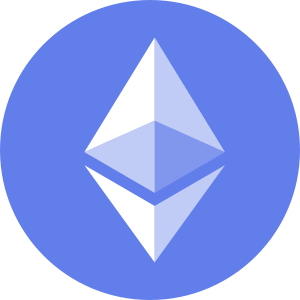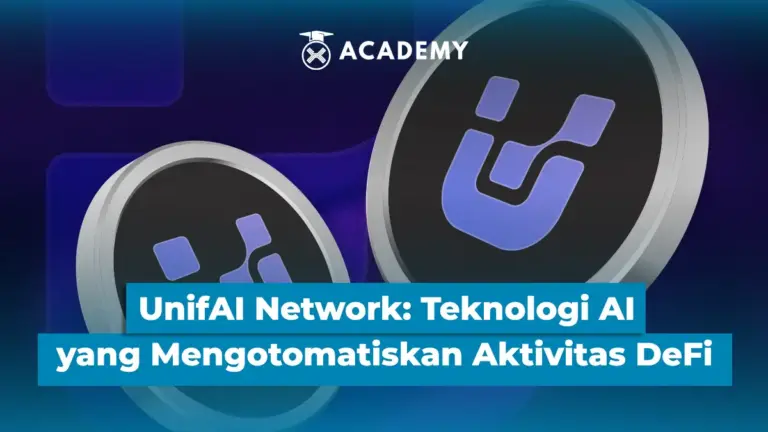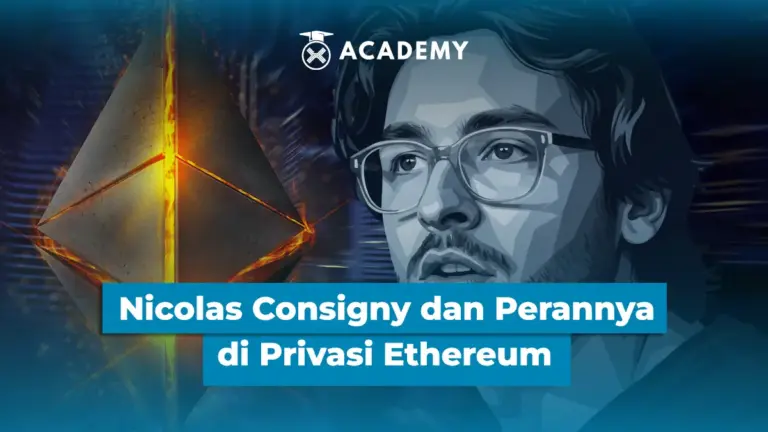Many people only know ADA as the main token of the Cardano network, without realizing that behind this technology lies a governance system designed with a different approach than other blockchains.
In Cardano (ADA), the development of its ecosystem does not rely entirely on a single entity or developer.
Instead, the network’s direction and innovation are determined collectively through a transparent and structured mechanism, an official document called the Cardano Improvement Proposal (CIP).
Through the CIP, the community can propose, discuss, and agree on major changes that directly impact the future of the Cardano protocol.
What is a Cardano Improvement Proposal (CIP)?

The Cardano Improvement Proposal (CIP) is an official document used by the Cardano community to submit proposed changes, both technical and social, within the Cardano blockchain ecosystem.
This process is at the heart of Cardano’s open and decentralized governance system, allowing everyone to directly contribute to shaping the platform’s development direction.
The concept of a CIP is similar to a Bitcoin Improvement Proposal (BIP) in Bitcoin or an Ethereum Improvement Proposal (EIP) in Ethereum.
The difference is that a CIP is not a static whitepaper, but rather a continuous improvement system, a continuous process of refining Cardano’s functionality over time.
CIPs are presented in a standardized and open format, meaning anyone can propose ideas, review proposals, or participate in development discussions.
The process itself adapts the classic internet format known as a Request for Comment (RFC). A CIP can be created by an individual, a small group, or a large organization.
Once the initial draft is complete, the proposal is opened for public community discussion, revision, and improvement through input from various parties, both technically savvy and bringing community perspectives.
All discussions are conducted openly, typically through biweekly meetings held on the Cardano Discord server and open to anyone.
Recordings of these meetings and summaries of the discussions are also transparently published on GitHub and the Cardano Foundation’s YouTube channel.
This allows anyone from the global community to monitor and participate in shaping Cardano’s future.
The CIP Process: The Community Helps Determine the Blockchain’s Direction
In the Cardano ecosystem, decision-making is not top-down, but collaborative.
One key mechanism that ensures this is the Cardano Improvement Proposal (CIP), an open system where anyone from any background can contribute directly to the development of the Cardano blockchain.
Everything starts with an initial draft, which can be submitted by anyone, from individual developers and user communities to academics and large organizations.
These drafts typically contain proposals related to technical developments, new standards, or on-chain governance. An example is CIP-1694, an influential proposal that laid the foundation for Cardano’s governance system during the Voltaire era.
The CIP format follows the classic Request for Comment (RFC) approach. Once a draft is drafted, the document is opened for public review.
CIP Editors, a dedicated team tasked with verifying the completeness and consistency of the document, review it and suggest improvements before the proposal advances to broader community discussion.
Anyone can provide input throughout this process, including users who are not developers.
Discussions take place transparently and openly, both through community forums and biweekly online meetings on Discord, which are free to join.
Each meeting is well-documented, with discussion results published on GitHub and recordings uploaded to the Cardano Foundation’s official YouTube channel.
This ensures the process remains inclusive, accountable, and accessible.
If, after a series of discussions and revisions, a proposal is deemed worthy, its status can change to “Accepted” or “Final,” meaning it is ready for implementation in the Cardano protocol.
This process is not only a symbol of digital democracy but also a tangible means for the global Cardano community to collectively guide the blockchain’s technical and social development.
Case Study: CIP-1694, Momentum for Blockchain Democracy
CIP-1694 is a significant milestone in Cardano’s history, marking the beginning of the Voltaire era, the final phase of the blockchain’s development focused on decentralized governance.
This proposal was designed as a first step to transfer governance control from key developers like IOG and Emurgo to the global Cardano community.
CIP-1694, released in November 2023, marked a major milestone by introducing an on-chain voting mechanism, allowing ADA holders to directly influence the direction of protocol development.
This system was not built overnight, but rather through a gradual and cautious approach to allow the entire ecosystem time to adapt and test new ideas before they were implemented permanently.
The governance structure proposed in CIP-1694 includes three main elements: the Constitutional Committee, Delegated Representatives (dReps), and Stake Pool Operators (SPOs).
The Constitution Committee is tasked with ensuring that every decision adheres to the Cardano Constitution, a document currently under discussion but which will ultimately form the basis of all governance policies.
Meanwhile, dReps will aggregate the votes of ADA holders and represent them in decision-making. Meanwhile, SPOs will be responsible for the ratification process of governance decisions.
CIP-1694 not only opens up opportunities for participation but also shifts the decision-making paradigm from a centralized system to a digital democracy.
Anyone in the world can become a member of the Committee or dReps, as long as they actively contribute and are trusted by the community.
Why is the CIP Important for Cardano?
The Cardano Improvement Proposal (CIP) plays a crucial role in ensuring Cardano’s development direction remains relevant and decentralized.
Through this mechanism, the Cardano roadmap is not controlled by a single entity but is instead shaped by the community in an open and transparent manner.
The CIP also provides broad opportunities for involvement for anyone, not just developers.
Regular users, academics, and industry players can contribute ideas, review proposals, and vote on decision-making. This way, the CIP makes the Cardano ecosystem truly participatory and open to all parties.
Furthermore, many major innovations within the Cardano network, such as NFTs, stablecoins, and smart contracts, have originated through the CIP process.
The Impact of the CIP on ADA Investors & the Community
The CIP is not only important for developers but also has a direct impact on investors and the ADA holding community.
Sound governance through the CIP process demonstrates that Cardano’s development is conducted in a transparent and structured manner.
This provides a strong foundation and can increase investor confidence in the stability and long-term direction of the project.
Furthermore, the CIP also serves as an official channel for proposing new features that can drive ecosystem growth, such as scalability improvements, DeFi integration, metadata systems, and various other technical innovations.
Through this mechanism, network development is more focused and aligned with market and community needs.
Equally important, ADA holders now have the opportunity to participate in the decision-making process. Through the voting system and involvement in the CIP, they can voice their opinions on Cardano’s future.
This makes ADA ownership not just an investment, but also a form of active participation in the ecosystem’s evolution.
Comparison: CIP vs. EIP vs. BIP

The three major blockchain networks, Cardano, Ethereum, and Bitcoin, each have their own proposal systems: Cardano Improvement Proposals (CIP), Ethereum Improvement Proposals (EIP), and Bitcoin Improvement Proposals (BIP).
While all three share the same primary purpose: to serve as a formal medium for proposing changes or network developments, their processes and approaches differ.
Bitcoin (BIP) has a conservative process and is very cautious in accepting changes.
The community is highly focused on stability and security, so BIP implementation tends to be slow, with only truly important and well-thought-out changes being accepted.
Ethereum (EIP), on the other hand, is known for its quicker response to market needs. EIPs are often used to propose innovative new features, particularly in DeFi and smart contract development.
While the process is open, the speed of EIP implementation is often a major draw for developers.
Meanwhile, Cardano (CIP) offers a distinct and distinctive approach through its academic-first model, meaning every significant technical proposal undergoes a peer-reviewed process before moving on to implementation.
This approach ensures that every change introduced into the Cardano protocol has been academically tested and has a strong theoretical foundation.
Furthermore, the CIP is community-driven, with the community playing a significant role in the process of drafting, discussing, and voting on submitted proposals.
In terms of community openness, Cardano provides a broad and transparent space for participation, from discussion forums, GitHub, Discord, and even video documentation on the YouTube channel.
This process allows anyone, including non-technical users, to actively participate in the direction of the ecosystem’s development.
Conclusion: Cardano Is More Than Just a Coin
So, that was an interesting discussion about Getting to Know the Cardano Improvement Proposal, the Essential Foundation of the ADA Blockchain, which you can read more about in the INDODAX Academy crypto academy.
In conclusion, Cardano is more than just ADA as a digital asset. Behind it, there is an open decision-making system called the Cardano Improvement Proposal (CIP).
The CIP is a dynamic foundation that ensures Cardano’s development continues in a structured, tested, and community-involved manner.
Through CIP, the community isn’t just a bystander; it truly has the power to shape the future direction of this blockchain. From technical proposals to governance, everything can be discussed, revised, and decided together.
Excellently, anyone can get involved, including you in Indonesia. As long as you’re willing to learn and contribute, you can be part of this technological journey.
Therefore, it’s important to realize that investing in crypto isn’t just about fluctuating prices. Behind it lies the infrastructure, ideas, and grand vision that determine a project’s long-term value.
And Cardano, with its CIP system, is a clear example that technology and community can work hand in hand to build an inclusive blockchain future.
By the way, besides broadening your investment horizons, you can also stay updated with the latest crypto news and monitor digital asset price movements live on the INDODAX Market. For a more personalized trading experience, explore our OTC trading service on INDODAX. Don’t forget to activate notifications to stay up-to-date with the latest information about digital assets, blockchain technology, and various other trading opportunities only on INDODAX Academy.
You can also follow our latest news through Google News for faster and more reliable access to information. For an easy and secure trading experience, download the best crypto app from INDODAX on the App Store or Google Play Store.
Maximize your crypto assets with the INDODAX Earn feature, a practical way to earn passive income from your holdings.
Also follow us on social media: Instagram, X, Youtube & Telegram
FAQ
1.What is a Cardano Improvement Proposal (CIP)?
A Cardano Improvement Proposal (CIP) is a formal document that proposes technical or policy changes to the Cardano network.
CIPs are used to develop new features, fix vulnerabilities, or establish governance rules in an open and structured manner.
2.What is the process for creating a CIP?
CIPs start with proposals from the community, developers, or independent entities. These proposals are then submitted to the
Cardano Foundation’s official GitHub, reviewed by a team of editors, opened for public discussion, and can reach Final status if approved. The process is transparent and open to anyone.
3.What is the content of CIP-1694 and why is it important?
CIP-1694 is a proposal that introduces Cardano’s on-chain governance system, where the community can participate in decision-making through voting.
This proposal reduces the central role of founding entities (such as IOG) and strengthens public participation in network development.
4.Can a CIP affect the price of ADA?
Not directly, but they can have a significant fundamental impact. Proposals that improve scalability, security, or adoption can strengthen investor confidence and signal a positive long-term price for ADA.
5.What’s the difference between a CIP and an EIP?
CIP is a proposal system for the Cardano network, while EIPs (Ethereum Improvement Proposals) are used on the Ethereum network.
The two are conceptually similar, but CIPs are more oriented towards academic research and peer review, while EIPs are faster and based on the practices of the developer community.
6.Who can create a Cardano CIP?
Anyone can propose a CIP, including independent developers, community members, researchers, or even ordinary ADA holders. Cardano prioritizes decentralization and open participation in decision-making.
7.Where can I read the official CIPs?
All CIPs are publicly available on the Cardano Foundation’s official GitHub page at https://github.com/cardano-foundation/CIPs. There, you can view drafts, community discussions, and the status of each proposal.
8.How does the community vote on Cardano proposals?
Through the on-chain governance mechanism introduced in CIP-1694, ADA holders can delegate their votes to representatives (dReps) or vote directly in the voting process that takes place on the Cardano blockchain.
Author: Boy






 Polkadot 8.91%
Polkadot 8.91%
 BNB 0.54%
BNB 0.54%
 Solana 4.81%
Solana 4.81%
 Ethereum 2.37%
Ethereum 2.37%
 Cardano 1.35%
Cardano 1.35%
 Polygon Ecosystem Token 2.11%
Polygon Ecosystem Token 2.11%
 Tron 2.85%
Tron 2.85%
 Market
Market


